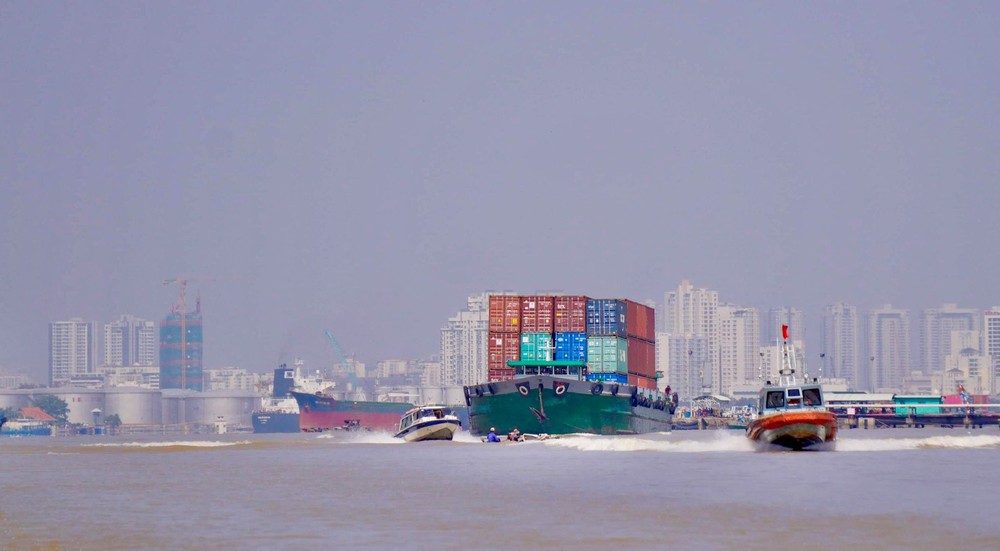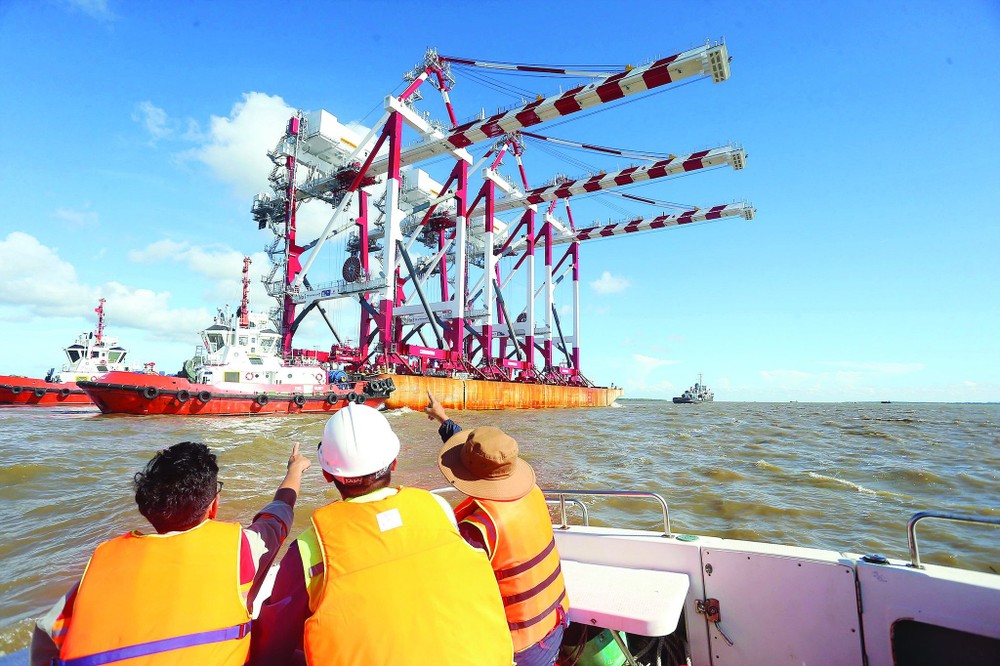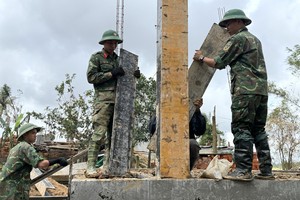 |
Low inland waterway freight transport due to infrastructure bottleneck |
According to the Ministry of Transport, with a dense system of rivers and canals, especially in the Southern region, inland waterways should be Vietnam's strong form of transportation. With the advantage of costing only 1/4 of road transport and 1/2 of rail transport, Inland Waterway Transport (IWT) is said to be an effective solution to help businesses reduce logistics costs and lower product costs. However, in fact, Vietnam’s IWT is occupying a small market share, not commensurate with the potential.
Inland waterway transport concerns any movement of goods using inland waterway vessels, which is undertaken wholly or partially in navigable inland waterways. Due to low investment capital for IWT, the infrastructure of ports and wharves is asynchronous and creeks are not of the same level; plus, water transport including boats, ships, and submarines is old.
Mr. Le Do Muoi, Director of the Transport Development and Strategy Institute, said that for a long time, the proportion of investment in the IWT sector has always been at the lowest level with just over 2 percent of the total investment of the transport sector while road investment accounts for more than 70 percent. Regarding social capital, IWT is also not attractive to businesses due to the lack of incentive mechanisms.
The biggest consequence of under-investment in IWT shipping is missing out on a very important market share in container handling at seaports. For instance, the proportion of IWT carrying container cargo is only about 1.8 percent in the Northern City of Hai Phong while it reached about 11 percent in Ho Chi Minh City and it was 72 percent in the Southern Province of Ba Ria - Vung Tau. Mr. Bui Thien Thu, Director of the Vietnam Inland Waterways Administration, disclosed that there are very few ports in the system that are qualified for container handling.
In addition, the multi-modal transport and logistics services at the main ports have not been implemented because the road connection is still difficult. In particular, container goods cannot be transported by IWT is also due to many old bridges such as the Hanoi-based Duong bridge, Binh Trieu bridge in HCMC, a bridge in the Southern Province of Dong Nai and An Thai bridge in the Northern Province of Hai Duong with low air clearance.
Regarding the route, although the waterway network is dense, it has many inadequacies, not ensuring the depth and width for large tonnage vehicles. For example, the Cho Gao canal on the arterial waterway from Ho Chi Minh City to the provinces in the Mekong Delta has not yet been secured for vessel travel.
 |
According to the approved IWT infrastructure plan for the 2021-2030 period, with a vision to 2050, the national waterway system will have nine corridors, including one coastal corridor in the Central region, four corridors in the North and four corridors in the South. The whole country will also have 54 clusters of cargo ports and 39 clusters of passenger ports. To implement this plan, the Ministry of Transport is studying building a mechanism.
Recently, Deputy Prime Minister Le Van Thanh signed and promulgated two important decisions for the development of IWT, including the Decision No. 21/2022/QD-TTg on mechanisms and policies to encourage transport development of IWT effective from December 25, 2022 and the Decision No. 1269/QD-TTg promulgating plans, policies, and solutions to implement the IWT infrastructure planning period 2021-2030, with a vision to 2050. According to experts, these latest directives show the Government's special interest in accelerating the development of the IWT field in order to soon achieve the set targets.
At the same time, the Government requested localities to prioritize projects on building new facilities, repairing means and inland waterway ports. Moreover, local administration should prioritize the budget, allocating land for the construction of an inland waterway port to exploit container cargo in the North and the Mekong Delta region. With these new points of mechanism and policy, IWT is facing strong development opportunities, towards the goal that by 2030, IWT can carry a freight volume of about 715 million tons and 397 million passengers.
Mr. Nguyen Ngoc Hai, Standing Vice Chairman of the Vietnam Association of Port-Waterway-Offshore Engineering, said to bring into full play the advantages of IWT transport, it is necessary to invest more in infrastructure and vessels. Adequate budget capital must be allocated to improve capacity and connect with other modes of transport. In addition, it is necessary to have policies, priority mechanisms and incentives for the IWT sector to encourage enterprises to invest.
According to the Ministry of Transport, a number of projects to improve the clearance of road bridges crossing the national IWT route phase 1 have been approved for implementation. Some newly built bridges include O Mon bridge, Thoi Lai bridge across O Mon canal, Dong Thuan bridge, Dong Binh bridge across Thi Doi - O Mon canal, Vam Xang - Thi Doi bridge across Thot Not canal, Sa Dec bridge (Nang Hai) across Lap Vo - Sa Dec canal, Moc Hoa bridge across Vam Co Tay river; Hong Ngu bridge across Hong Ngu - Vinh Hung canal, and the Mo Cay bridge crosses the Mo Cay canal.
At the same time, the Ministry has simultaneously renovated and raised the air clearance of the Giong Gang bridge across Hong Ngu - Vinh Hung canal and dismantled the old Mang Thit bridge across the Mang Thit River.
























